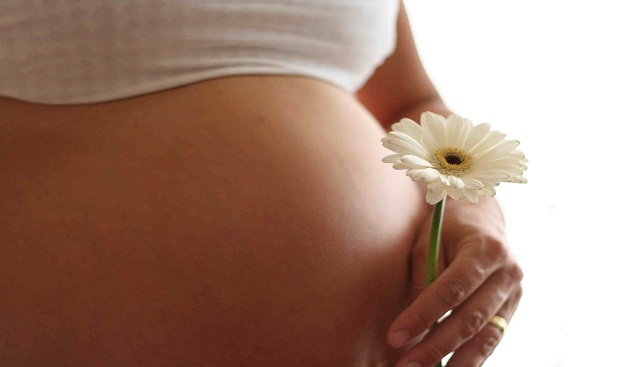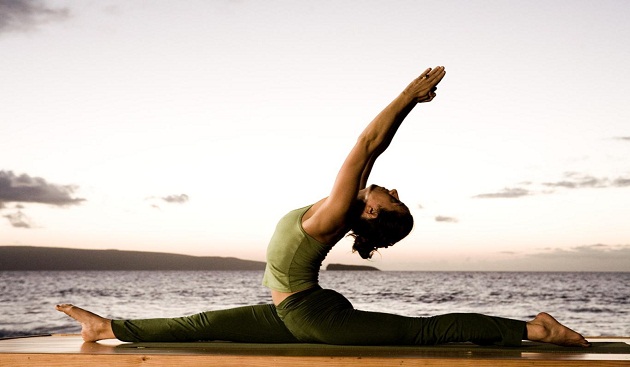Can Yoga Help in PCOS / PCOD?
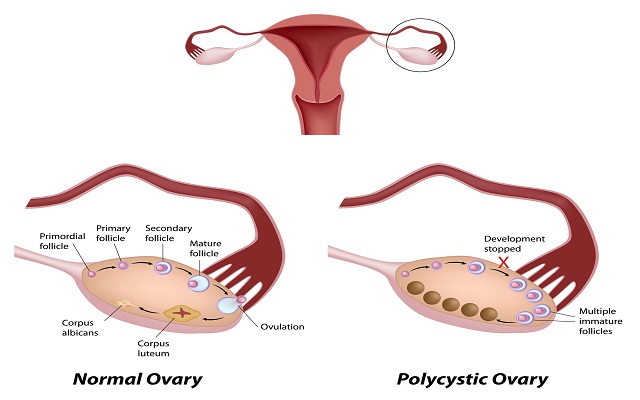
blood cell types
The moment they are diagnosed with PCOS (Poly Cystic Ovarian Syndrome), most women link it with infertility. It is an unfortunate truth that a lot of women today are suffering from diseases like PCOS (Polycystic Ovarian Syndrome) at a very young age. The condition appears in the reproductive ages of 12-45 and its symptoms range from irregular to no menstruation, acne and central obesity.
But we need to remember that although women with PCOS can have trouble in conceiving, it does not necessarily mean that getting pregnant is impossible. There are a lot of women with this condition who have not only had one but many healthy children.
Modern medicine does not have a definite answer as to the cause of hormonal imbalance leading to PCOS and if the cause is unknown, how can it be cured? And so, fortunately, many women turn to the age old techniques of yoga, as an option to combat it.
So let us see what yoga offers us to combat PCOS.
Keep a Balanced Mind
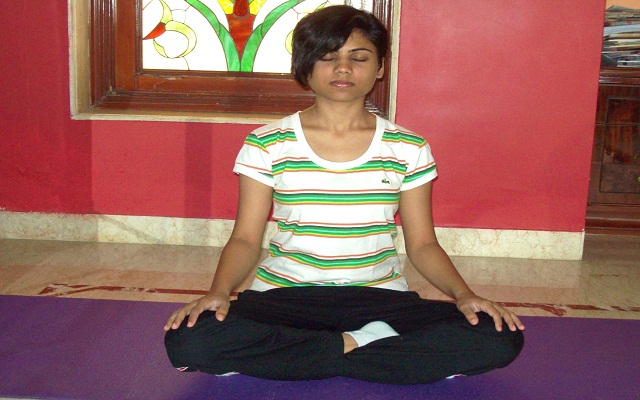
According to yoga, the root cause of most diseases lies in the mind. Hormone secretion too is closely related to our state of mind. If we remain happy and keep a positive attitude, half the battle is won. So it is important to keep a balanced mind in any kind of situation to maintain balance in the body.
Sitting in a simple meditative posture like Sukhasana for at least 5 minutes a day can help train the mind to remain balanced.
De-stress and Relax
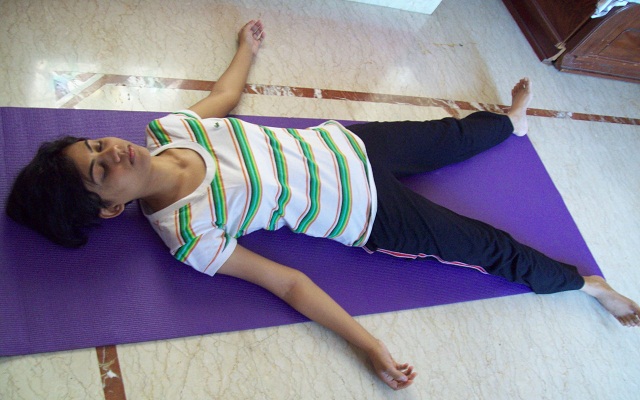
When we are stressed, the body functions like hormone secretion also get disturbed. So it is very important to relax not just physically but mentally too. Keep some time out daily for an active hobby like singing, painting, playing music, etc. to relax your stressed mind. Yoga also recommends Savasana as a technique to relax the mind.
Asanas
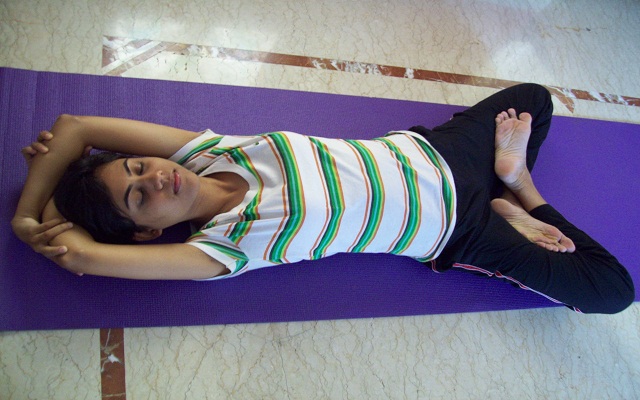
“According to yoga, there is no single cause of any disease,” Smt. Hansaji Yogendra of The Yoga Institute, Santacruz has reiterated hundreds of times. And so it would be wrong to assume that any single technique or Asana can help in curing a condition. However, there are some Asanas specific to the pelvic region that can be beneficial for the ovaries. One of these is:
Matsyasana
– Firstly sit on the mat with your legs stretched in front.
– Now, adjust the foot lock in a semi-lotus (Padmasana) position.
– Then reclining towards the back, while inhaling, slowly and carefully fall behind, taking the support of the arms if required.
– Finally, lie supine with the folded legs, keeping the foot lock intact.
– Then fold the arms under the head by holding them crosswise and resting the head on them.
– Maintain this pose for while holding the breath for a few seconds and then return to the starting position while exhaling.
Benefits: This pose is best practiced in the morning and provides gentle exercise and internal massage through deep pressure and stretch of the mid-trunk and is beneficial to the sex organs within the pelvis, especially the ovaries.
Contraindications: This pose is contraindicated during the first 3 days of menstruation and last months of pregnancy.
Supta Bhadrasana

– Lie supine with legs straight.
– While inhaling, draw the legs nearer to the body keeping the legs in contact with the floor.
– Keep the knees bent outward and soles of the feet touching each other.
– Keep the hands relaxed on the abdomen.
– Hold the pose for 30 seconds in normal breathing.
– Then while exhaling return to the starting position.
Benefits: This posture affects the pelvic organs, groin, thigh and the sex organs. It exercises some of the most unused muscles of the body and is beneficial for the urogenital region.
Contraindications: Recent surgery in the abdomen or reproductive regions is contraindicated for this position.
Paryankasana
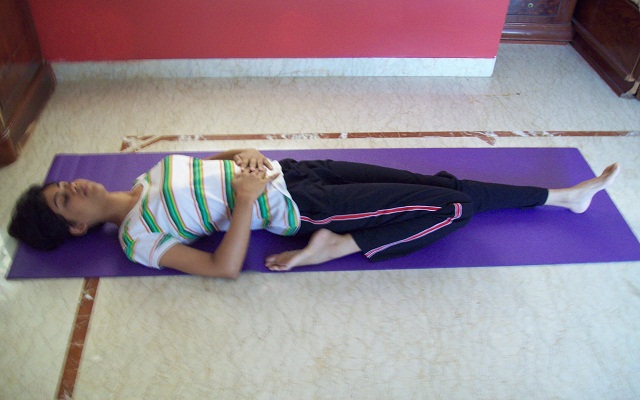
– First assume the ordinary kneeling pose.
– Then sit on the calves by folding the legs from the knee joints under the thighs and placing the feet under the buttocks.
– Keeping the legs together, slowly while inhaling, lean backward with the aid of the elbows and lie supine.
– Keep the knees together and neck and body straight.
– Keep the hands on the abdomen or chest and stay there with normal relaxed breathing for a maximum of 2 minutes.
– Finally, exhaling, return to the starting position.
– It’s best to begin with only one leg folded until more flexibility is achieved.
Benefits: This asana is best practiced in the evening, especially for beginners. It gives a maximum stretch to the abdomen, tones the muscles of the abdomen and provides fresh blood supply to the sex organs.
Contraindications: This posture should be avoided during pregnancy and first 3 days of menstruation.
Lifestyle and Diet

A few small changes in lifestyle and diet can make a big difference in our health. A sedentary lifestyle with no exercise can only lead to degeneration of body functions. Regular walks in the morning or a regular yoga asana routine will help restore balance in the body and improve blood circulation in the body.
Inadequate or disturbed sleep can also add to mental and physical stress. The best time to sleep is between 10 pm and 6 am to get maximum rest for the day.
Finally, another important aspect for good health is correct diet. A balanced diet made from fresh seasonal food is the best. Try and avoid processed, canned, spicy food and food that is difficult to digest. Fresh fruits, green vegetables, wheat and fibrous food helps to keep the system pure and balanced.
So with these few changes added to your daily life, you will be able manage and slowly overcome many of the symptoms of PCOS and live a positive and happy life.
PLEASE NOTE: It is necessary to learn and practice asanas under the supervision of a trained yoga teacher as each asana has its benefits and contraindications and each person may have to vary the technique depending on their present health condition.



